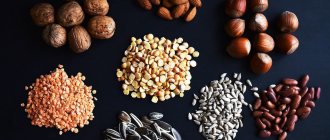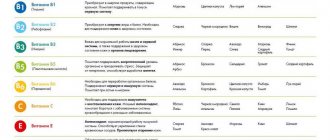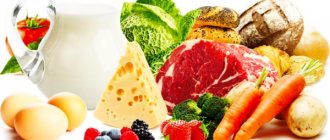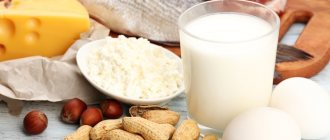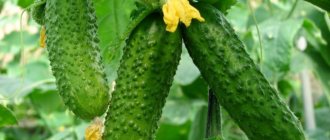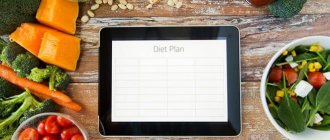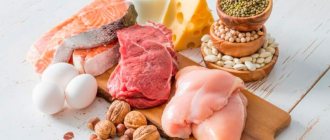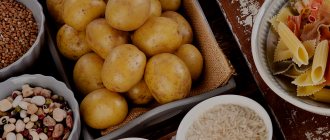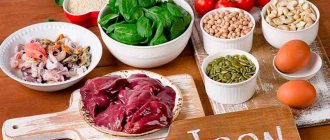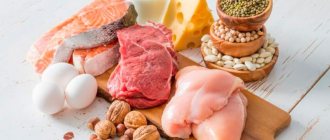Soya beans
They are the richest type of legume in protein: Cooked soybeans provide about 28 grams of protein per cup, which is about the same amount of protein as 150 grams of chicken. More importantly. soybeans are one of two plant proteins that contain all the amino acids. The second is considered quinoa.
A serving of soybeans also contains 17 grams of carbohydrates and 15 grams of fat, 58 of which are unsaturated fatty acids. The fiber in beans improves gut health, and the unsaturated fats are good for cardiovascular health.
Protein Content: 28.6 g per cup (brewed).
Edamame beans
These protein-packed crumbs have probably already made their way onto your plate or, in any case, were served as a side dish for sushi at your favorite Japanese restaurant. You probably didn't know how rich in protein they are, but don't let the small size fool you - they're very healthy.
Edamame—unripened soybeans that are boiled or steamed right in the pod—contains 22 grams of protein per 1 cup. Pair them with your favorite protein meal and you'll have no problem reaching the recommended 30g of protein per meal.
Protein Content: 16.9 g per cup (cooked).
Lentils
From green beans to chickpeas, beans are a great source of plant-based protein. When it comes to legumes, lentils are among the leaders. They contain about 18 grams of protein per cup when cooked, and about 230 calories per serving, so they're good for those counting calories.
Lentils are also an excellent source of fiber and folate, as well as thiamine, phosphorus and iron. Add them to a salad, use them in soup, or simply make them into meatless patties.
Protein Content: 17.9 g per cup (cooked).
Fruits
Fiber-rich foods - list for weight loss
Not everyone knows that protein can be found not only in vegetables and nuts, but also in fruits. The leaders in this list are avocado, dried apricots and dates. There is slightly less of it in coconut, kiwi, figs and bananas.
There are contraindications! Dates should not be eaten by diabetics due to their high glycemic index. The high calorie content of avocado can interfere with the fight against extra pounds. Kiwi is not suitable for those with high acidity.
Having a correct idea of which vegetables have a lot of protein, you can replace animal protein with plant protein without compromising your health.
Broccoli
Looking for a source of protein without fat? You should take a closer look at the greenery, which resembles a small tree. Broccoli is usually thought of as simply a nice accompaniment to meat or chicken, but 1 cup of chopped broccoli contains 2.6 grams of protein. And unlike animal protein, a cup of leafy greens provides 100% of your daily value of vitamin C and K.
Broccoli is also an excellent source of folic acid, another essential vitamin that reduces the risk of cancer.
Protein content: 2.6 g per cup.
List of Protein Rich Foods
10 foods with the highest protein content
- Poultry meat – from 17 to 22 grams (per 100 grams of product)
- Meat – from 15 to 20 grams
- Fish - from 14 to 20 grams
- Seafood – from 15 to 18 grams
- Legumes – from 20 to 25 grams
- Nuts – from 15 to 30 grams.
- Eggs – 12 grams
- Hard cheese – from 25 to 27 grams
- Cottage cheese – from 14 to 18 grams
- Cereals – from 8 to 12 grams
Meat protein table
| Food product | Protein (grams) |
| Chicken | 20,8 |
| Turkey | 21,6 |
| Beef | 18,9 |
| Pork | 11,4-16,4 |
| Mutton | 16,3 |
| Boiled sausage | 10,1-13,7 |
| Smoked sausage | 16,2-28,2 |
Fish and seafood proteins
| Food product | Protein (grams) |
| Squid | 18,0 |
| Crab | 16,0 |
| Shrimps | 18,0 |
| Mackerel | 18,0 |
| Flounder | 16,1 |
| Pink salmon | 21,0 |
| capelin | 13,4 |
| Herring | 17,7 |
| Zander | 19,0 |
| Cod | 17,5 |
| Sturgeon | 16,4 |
| Bream | 17,1 |
| Pollock | 15,9 |
| Salmon | 20,8 |
| Canned fish in oil | 17,4-20,7 |
| Canned fish in tomato | 12,8-19,7 |
| Canned fish in its own juice | 20,9-28,7 |
Milk proteins
| Food product | Protein (grams) |
| Milk | 2,8 |
| Kefir | 2,8-3,0 |
| Sour cream | 2,8-3,0 |
| Yogurt | 5,0 |
| Cream | 2,8-3,0 |
| Cheese | 23,4-26,8 |
| Cottage cheese | 14,0-18,0 |
Cereals
| Food product | Protein (grams) |
| Oatmeal | 11,0 |
| Buckwheat | 10,8 |
| Rice | 7,0 |
| Millet | 11,5 |
| Pearl barley | 9,3 |
| Manna | 11,3 |
| Hercules | 13,1 |
The data given in the tables are absolute values, but the percentage of protein absorption by the body does not reach one hundred percent for everyone.
Protein Digestibility Chart
| Protein source | Digestibility coefficient |
| Milk | 100% |
| Supro isolated soy protein | 100% |
| Beef | 92% |
| Fish | 92% |
| Other isolated soy protein | 92% |
| Mechanically separated poultry meat | 70% |
| Canned beans | 68% |
| Oats | 57% |
| Rice | 54% |
| Peanut | 42% |
| Corn | 42% |
| Wheat gluten | 27% |
To find how much protein enters the body, add 50% to the above calculation, which will be 90 grams, that is, 65x1 + 50%.
Polka dots
Peas contain about 9 grams of protein per cup. It is also an excellent source of vitamins A, C, thiamine, phosphorus and iron. In addition, the large amount of B vitamins and folic acid in peas helps reduce the risk of cardiovascular diseases.
There's also 5.5 grams of fiber in each serving. Use these guys on a salad, make them a side dish for chicken, and add their favorite primavera pasta to your high-carb day.
Protein content: 8.6 g per cup.
The role of vegetable protein in human nutrition
Proteins (proteins) are valuable components of nutrition, which cannot be compensated for by anything. These are complex compounds containing about 80 different amino acids. Most of them are produced in the body independently, but 8 are essential and come only from food.
Vegetable protein:
- provides the body with vitamins, amino acids, microelements;
- improves metabolism;
- strengthens the immune system;
- normalizes the digestion process;
- promotes weight loss;
- has a positive effect on the condition of the skin and hair.
Asparagus
If you've ever trained for a competition, you're already aware of the power of asparagus. In fact, these fine, green feathers should be on your dinner plate every day. In addition to the fact that it is an effective diuretic - hello, drying, goodbye, water - among the whole world of vegetables, asparagus is also distinguished by its high protein content. Just 100 g of green vegetable contains 2.4 g of protein.
Asparagus is also number one in vitamin K and an excellent source of potassium and antioxidants. Protein content: 2.4 g per 100 g.
Protein content of fruits and vegetables
Table of protein content in products from the category - fruits and vegetables. The chart shows the percentage of protein from the daily requirement, calculated based on a 100 g portion of the product.
| № | Amount of protein | Share of daily value per 100 g | |
| 1 | Soy Protein (Isolate) Powder | 88.3 g | 117,8% |
| 2 | Soy protein (concentrate) powder | 63.6 g | 84,8% |
| 3 | Soybean cake | 49.2 g | 65,6% |
| 4 | Peanuts raw | 25.8 g | 34,4% |
| 5 | Roasted peanuts | 24.4 g | 32,5% |
| 6 | Fenugreek seeds | 23.0 g | 30,7% |
| 7 | Dry chickpeas | 20.5 g | 27,3% |
| 8 | Boiled soybeans (ripe) | 18.2 g | 24,3% |
| 9 | Lupine (lupine beans) cooked | 15.6 g | 20,8% |
| 10 | Dried goji berries | 14.3 g | 19,0% |
| 11 | Fresh sprouted soybeans | 13.1 g | 17,5% |
| 12 | Edamame cooked | 11.9 g | 15,9% |
| 13 | Hot chili peppers dried in the sun | 10.6 g | 14,1% |
| 14 | Soy sauce (tamari) | 10.5 g | 14,0% |
| 15 | Dry soy tofu cheese | 10.0 g | 13,3% |
| 16 | Boiled pink beans | 9.1 g | 12,1% |
| 17 | Hard tofu cheese (linen) | 9.0 g | 12,1% |
| 18 | Lentils boiled in water | 9.0 g | 12,0% |
| 19 | Boiled variegated beans (Pinto) | 9.0 g | 12,0% |
| 20 | Ginger extract powder | 9.0 g | 12,0% |
| 21 | Fresh sprouted lentils | 9.0 g | 11,9% |
| 22 | Fermented tofu cheese (fuyu) | 8.9 g | 11,9% |
| 23 | Boiled black beans | 8.9 g | 11,8% |
| 24 | Boiled chickpeas | 8.9 g | 11,8% |
| 25 | Fresh sprouted peas | 8.8 g | 11,7% |
| 26 | Boiled red beans (Kidney) | 8.7 g | 11,6% |
| 27 | Peas boiled in water (ripe) | 8.3 g | 11,1% |
| 28 | Boiled white beans | 8.2 g | 11,0% |
| 29 | Boiled black-eyed beans | 7.7 g | 10,3% |
| 30 | Boiled beans (ripe) | 7.6 g | 10,1% |
| 31 | Boiled adzuki beans | 7.5 g | 10,0% |
| 32 | Boiled mung bean | 7.0 g | 9,4% |
| 33 | Soy sauce (hydrolyzed) | 7.0 g | 9,3% |
| 34 | Potato starch | 6.9 g | 9,2% |
| 35 | Boiled pigeon peas | 6.8 g | 9,0% |
| 36 | Raw garlic | 6.4 g | 8,5% |
| 37 | Fresh green beans | 5.6 g | 7,5% |
| 38 | Fresh grape leaves | 5.6 g | 7,5% |
| 39 | Fresh green peas | 5.4 g | 7,2% |
| 40 | Fresh sprouted variegated beans (Pinto) | 5.3 g | 7,0% |
| 41 | Boiled green beans | 4.8 g | 6,4% |
| 42 | Wasabi root raw | 4.8 g | 6,4% |
| 43 | Fern (shoots) raw | 4.6 g | 6,1% |
| 44 | Canned green peas | 4.4 g | 5,9% |
| 45 | Raw curly cabbage | 4.3 g | 5,7% |
| 46 | Red beans (Kidney) sprouted fresh | 4.2 g | 5,6% |
| 47 | Quinoa fresh | 4.2 g | 5,6% |
| 48 | Fresh sprouted alfalfa seeds | 4.0 g | 5,3% |
| 49 | Dried bananas | 3.9 g | 5,2% |
| 50 | Broccoli raab cooked | 3.8 g | 5,1% |
| 51 | Amaranth grains cooked | 3.8 g | 5,1% |
| 52 | Boiled corn | 3.4 g | 4,5% |
| 53 | Seedless raisins | 3.4 g | 4,5% |
| 54 | Dried apricots | 3.4 g | 4,5% |
| 55 | Fresh Brussels sprouts | 3.4 g | 4,5% |
| 56 | Salsify (salf's root) raw | 3.3 g | 4,4% |
| 57 | Raw corn | 3.3 g | 4,4% |
| 58 | Fresh chives | 3.3 g | 4,4% |
| 59 | Fresh broccoli raab | 3.2 g | 4,2% |
| 60 | Fresh pumpkin leaves | 3.2 g | 4,2% |
| 61 | Fresh sprouted mung bean | 3.0 g | 4,1% |
| 62 | Fresh kale | 3.0 g | 4,0% |
| 63 | Fresh parsley | 3.0 g | 4,0% |
| 64 | Boiled spinach | 3.0 g | 4,0% |
| 65 | Boiled artichokes | 2.9 g | 3,9% |
| 66 | Fresh spinach | 2.9 g | 3,8% |
| 67 | Fresh broccoli | 2.8 g | 3,8% |
| 68 | Fresh tamarind | 2.8 g | 3,7% |
| 69 | French fries | 2.8 g | 3,7% |
| 70 | Cooked cabbage (boiled) | 2.7 g | 3,6% |
| 71 | Fresh dandelion leaves | 2.7 g | 3,6% |
| 72 | Fresh watercress | 2.6 g | 3,5% |
| 73 | Raw milkweed shoots | 2.6 g | 3,5% |
| 74 | Fresh arugula | 2.6 g | 3,4% |
| 75 | Fresh guava | 2.6 g | 3,4% |
| 76 | Boiled Brussels sprouts | 2.6 g | 3,4% |
| 77 | Cooked cowpea (boiled) | 2.5 g | 3,4% |
| 78 | Canned heart of palm | 2.5 g | 3,4% |
| 79 | Fresh shallots | 2.5 g | 3,3% |
| 80 | Fresh amaranth leaves | 2.5 g | 3,3% |
| 81 | Dates Deglet nur | 2.5 g | 3,3% |
| 82 | Boiled asparagus | 2.4 g | 3,2% |
| 83 | Boiled broccoli | 2.4 g | 3,2% |
| 84 | Raw beetroot | 2.3 g | 3,1% |
| 85 | Canned corn | 2.3 g | 3,1% |
| 86 | Fresh beet tops | 2.2 g | 2,9% |
| 87 | Raw asparagus | 2.2 g | 2,9% |
| 88 | Fresh passion fruit | 2.2 g | 2,9% |
| 89 | Cilantro (coriander leaves) fresh | 2.1 g | 2,8% |
| 90 | Boiled burdock root | 2.1 g | 2,8% |
| 91 | Raw potatoes | 2.1 g | 2,7% |
| 92 | Fresh purslane | 2.0 g | 2,7% |
| 93 | Fresh sorrel | 2.0 g | 2,7% |
| 94 | Fresh savoy cabbage | 2.0 g | 2,7% |
| 95 | Avocado fresh | 2.0 g | 2,7% |
| 96 | Jerusalem artichoke raw | 2.0 g | 2,7% |
| 97 | Baked potatoes | 2.0 g | 2,6% |
| 98 | Raw okra | 1.9 g | 2,6% |
| 99 | Fresh cauliflower | 1.9 g | 2,6% |
| 100 | Physalis fresh | 1.9 g | 2,5% |
| 101 | Fresh onion | 1.9 g | 2,5% |
| 102 | Boiled green beans (asparagus) | 1.9 g | 2,5% |
| 103 | Fresh kumquat | 1.9 g | 2,5% |
| 104 | Red hot fresh chili pepper | 1.9 g | 2,5% |
| 105 | Mashed potatoes with milk and butter, prepared | 1.9 g | 2,5% |
| 106 | Boiled cauliflower | 1.8 g | 2,5% |
| 107 | Raw ginger root | 1.8 g | 2,4% |
| 108 | Dates Majul | 1.8 g | 2,4% |
| 109 | Boiled kohlrabi (cabbage) | 1.8 g | 2,4% |
| 110 | Fresh chard | 1.8 g | 2,4% |
| 111 | Kiwano fresh | 1.8 g | 2,4% |
| 112 | Fresh jackfruit | 1.7 g | 2,3% |
| 113 | Boiled potatoes | 1.7 g | 2,3% |
| 114 | Fresh chicory leaves | 1.7 g | 2,3% |
| 115 | Fresh kohlrabi | 1.7 g | 2,3% |
| 116 | Sugar apple fresh | 1.7 g | 2,3% |
| 117 | Boiled beets | 1.7 g | 2,2% |
| 118 | Fresh pomegranate | 1.7 g | 2,2% |
| 119 | Raw beets | 1.6 g | 2,1% |
| 120 | Cherimoya fresh | 1.6 g | 2,1% |
| 121 | Raw sweet potato | 1.6 g | 2,1% |
| 122 | Boiled bamboo shoots | 1.5 g | 2,0% |
| 123 | Frozen logan berry | 1.5 g | 2,0% |
| 124 | Fresh Chinese cabbage | 1.5 g | 2,0% |
| 125 | Fresh turnip tops | 1.5 g | 2,0% |
| 126 | Fresh leek | 1.5 g | 2,0% |
| 127 | Yams cooked | 1.5 g | 2,0% |
| 128 | Durian fresh | 1.5 g | 2,0% |
| 129 | Fresh black persimmon (sapota) | 1.5 g | 1,9% |
| 130 | Fresh mulberries | 1.4 g | 1,9% |
| 131 | Fresh red cabbage | 1.4 g | 1,9% |
| 132 | Radicchio fresh | 1.4 g | 1,9% |
| 133 | Chicory root, raw | 1.4 g | 1,9% |
| 134 | Fresh apricot | 1.4 g | 1,9% |
| 135 | Fresh red or white currants | 1.4 g | 1,9% |
| 136 | Fresh black currant | 1.4 g | 1,9% |
| 137 | Fresh blackberries | 1.4 g | 1,9% |
| 138 | Fresh lettuce | 1.4 g | 1,8% |
| 139 | Boiled onions | 1.4 g | 1,8% |
| 140 | Fresh head lettuce | 1.4 g | 1,8% |
| 141 | Fresh red lettuce | 1.3 g | 1,8% |
| 142 | Fresh longan | 1.3 g | 1,7% |
| 143 | Fresh plantains | 1.3 g | 1,7% |
| 144 | Fresh cabbage, white cabbage | 1.3 g | 1,7% |
| 145 | Boiled cabbage (white cabbage) | 1.3 g | 1,7% |
| 146 | Fresh endive | 1.3 g | 1,7% |
| 147 | Fennel, raw (fruit or root) | 1.2 g | 1,7% |
| 148 | Fresh Roman salad | 1.2 g | 1,6% |
| 149 | Jujube (Chinese date) fresh | 1.2 g | 1,6% |
| 150 | Parsnip root raw | 1.2 g | 1,6% |
| 151 | Chinese fresh broccoli | 1.2 g | 1,6% |
| 152 | Fresh raspberries | 1.2 g | 1,6% |
| 153 | Escarole cooked | 1.2 g | 1,5% |
| 154 | Fried or baked zucchini (without oil) | 1.1 g | 1,5% |
| 155 | Fresh kiwi | 1.1 g | 1,5% |
| 156 | Chinese cooked broccoli | 1.1 g | 1,5% |
| 157 | Sauerkraut (kimchi) | 1.1 g | 1,5% |
| 158 | Fresh lemon, without peel | 1.1 g | 1,5% |
| 159 | Fresh onions | 1.1 g | 1,5% |
| 160 | Fresh bananas | 1.1 g | 1,5% |
| 161 | Raw rutabaga | 1.1 g | 1,4% |
| 162 | Fresh breadfruit | 1.1 g | 1,4% |
| 163 | Starfruit (starfruit) fresh | 1.0 g | 1,4% |
| 164 | Canned green olives | 1.0 g | 1,4% |
| 165 | Cooked squash | 1.0 g | 1,4% |
| 166 | Fresh soursop | 1.0 g | 1,3% |
| 167 | Raw pumpkin | 1.0 g | 1,3% |
| 168 | Fresh cherries | 1.0 g | 1,3% |
| 169 | Fresh red bell pepper | 1.0 g | 1,3% |
| 170 | Canned olives | 1.0 g | 1,3% |
| 171 | Fresh green onion | 1.0 g | 1,3% |
| 172 | Fresh vegetable physalis | 1.0 g | 1,3% |
| 173 | Hibiscus flower, fresh | 1.0 g | 1,3% |
| 174 | Prunes | 1.0 g | 1,3% |
| 175 | Cooked tomatoes | 1.0 g | 1,3% |
| 176 | Fresh oranges | 0.9 g | 1,3% |
| 177 | Carrots raw (fresh) | 0.9 g | 1,2% |
| 178 | Fresh peach, pitted | 0.9 g | 1,2% |
| 179 | Rhubarb stem raw | 0.9 g | 1,2% |
| 180 | Turnips raw | 0.9 g | 1,2% |
| 181 | Fresh iceberg lettuce | 0.9 g | 1,2% |
| 182 | Fresh tomatoes | 0.9 g | 1,2% |
| 183 | Fresh gooseberries | 0.9 g | 1,2% |
| 184 | Green bell pepper, fresh | 0.9 g | 1,1% |
| 185 | Fresh clementine | 0.9 g | 1,1% |
| 186 | Fresh cantaloupe melon | 0.8 g | 1,1% |
| 187 | Cooked eggplant | 0.8 g | 1,1% |
| 188 | Fresh lychees | 0.8 g | 1,1% |
| 189 | Chayote raw | 0.8 g | 1,1% |
| 190 | Mango fresh | 0.8 g | 1,1% |
| 191 | Leeks cooked | 0.8 g | 1,1% |
| 192 | Fresh grapes (muscat varieties) | 0.8 g | 1,1% |
| 193 | Fresh tangerines | 0.8 g | 1,1% |
| 194 | Fresh persimmon | 0.8 g | 1,1% |
| 195 | Fresh Suriname cherries | 0.8 g | 1,1% |
| 196 | Fresh grapefruit | 0.8 g | 1,0% |
| 197 | Boiled carrots | 0.8 g | 1,0% |
| 198 | Fresh pomelo | 0.8 g | 1,0% |
| 199 | Boiled Spanish artichokes | 0.8 g | 1,0% |
| 200 | Fresh figs | 0.8 g | 1,0% |
| 201 | Fresh blueberries | 0.7 g | 1,0% |
| 202 | Prickly pear (fruit) fresh | 0.7 g | 1,0% |
| 203 | Fresh jambolan | 0.7 g | 1,0% |
| 204 | Boiled or baked pumpkin | 0.7 g | 1,0% |
| 205 | Grapes (red or green) fresh | 0.7 g | 1,0% |
| 206 | Feijoa fresh | 0.7 g | 0,9% |
| 207 | Cooked turnips | 0.7 g | 0,9% |
| 208 | Fresh plum | 0.7 g | 0,9% |
| 209 | Fresh lime | 0.7 g | 0,9% |
| 210 | Fresh celery | 0.7 g | 0,9% |
| 211 | Fresh radish | 0.7 g | 0,9% |
| 212 | Fresh strawberries | 0.7 g | 0,9% |
| 213 | Fresh elderberry | 0.7 g | 0,9% |
| 214 | Fresh cucumbers | 0.7 g | 0,9% |
| 215 | Rambutan canned | 0.7 g | 0,9% |
| 216 | Fresh watermelon | 0.6 g | 0,8% |
| 217 | Fresh daikon | 0.6 g | 0,8% |
| 218 | Java apple fresh | 0.6 g | 0,8% |
| 219 | Fresh melon | 0.5 g | 0,7% |
| 220 | Fresh pineapple | 0.5 g | 0,7% |
| 221 | Taro cooked tubers | 0.5 g | 0,7% |
| 222 | Fresh carissa fruits | 0.5 g | 0,7% |
| 223 | Fresh Antillean apricot | 0.5 g | 0,7% |
| 224 | Fresh papaya | 0.5 g | 0,6% |
| 225 | Fresh cranberries | 0.5 g | 0,6% |
| 226 | Naranjilla frozen | 0.4 g | 0,6% |
| 227 | Sapodilla fruits fresh | 0.4 g | 0,6% |
| 228 | Fresh medlar | 0.4 g | 0,6% |
| 229 | Fresh quince | 0.4 g | 0,5% |
| 230 | Barbados cherry fresh | 0.4 g | 0,5% |
| 231 | Fresh pear | 0.4 g | 0,5% |
| 232 | Fresh apples | 0.3 g | 0,3% |
| 233 | Boiled butterbur | 0.2 g | 0,3% |
Pumpkin seeds
After you have determined the pulp into a wonderful pie, the question arises - what to do with pumpkin seeds? Frying them makes a great alternative to chips, but did you know that 30g of seeds is almost 5g of protein, which is even more than half an egg?
Not only is it a high-protein plant bomb: a diet rich in pumpkin seeds can reduce the risk of stomach, breast, lung and intestinal cancer.
Pumpkin seeds are also rich in antioxidants, which help reduce oxidative damage in the body.
Are you experiencing insomnia? L-tryptophan in pumpkin seeds helps combat sleepless nights.
Protein content: 5.2 g per 30 g serving (fried).
bean sprouts
Typically roasted, used as a topping for a turkey and cheese sandwich, or added for crunch to a salad, bean sprouts are a great source of plant-based protein!
A cup of cooked bean sprouts contains 2.5 grams of protein and many more nutrients, such as lecithin, which lowers cholesterol, and zinc, a mineral that plays an important role in normal health.
Protein Content: 2.5 g per cup (cooked).
Spinach
Spinach contains a huge amount of nutrients: vitamins B, C, K, P and PP, as well as potassium, calcium, sodium, iron, and there is no less carotene in it than in carrots. Spinach is indispensable for the healthy nutrition of young children and pregnant women. The calorie content of spinach is 22 kcal per 100 g. In terms of folic acid content, spinach is second only to parsley. The most important thing is not to overcook spinach: it is best eaten raw in a salad, most importantly, seasoned correctly.
Protein Content: 5.8 g protein per cup.
Where else is protein found?
It is worth highlighting hard cheeses, in particular Parmesan. The king of cheeses boasts a protein content of 35 g, which is even higher than salmon caviar. Despite the high nutritional value, eating Parmesan alone is hardly appropriate, however, when choosing cheese, you should give preference to hard varieties with a good composition, such as Dutch, Russian, Gouda, Poshekhonsky, etc.
It is important not to forget that cheeses contain a large amount of animal fats, so they are welcome in the diet in moderation.
